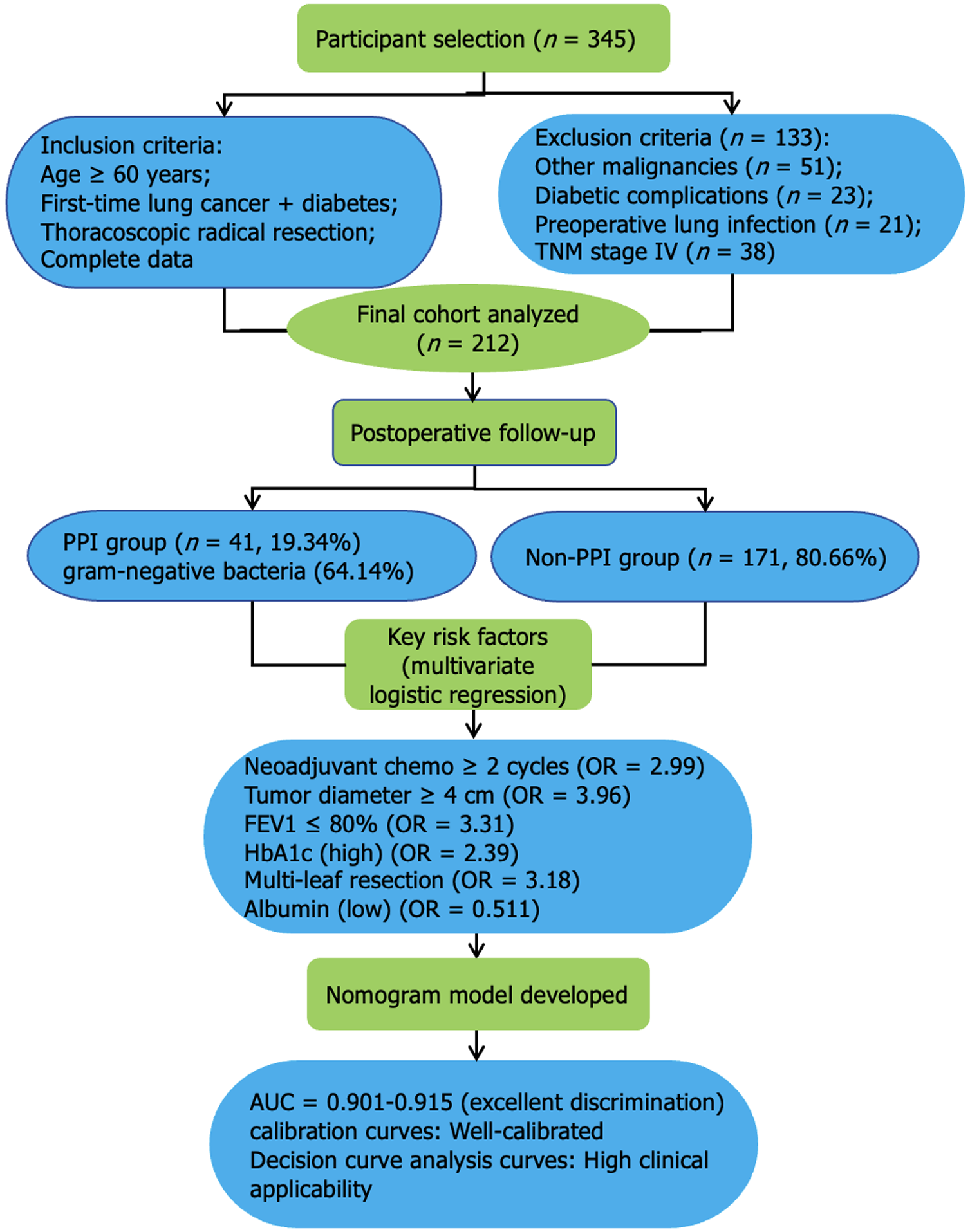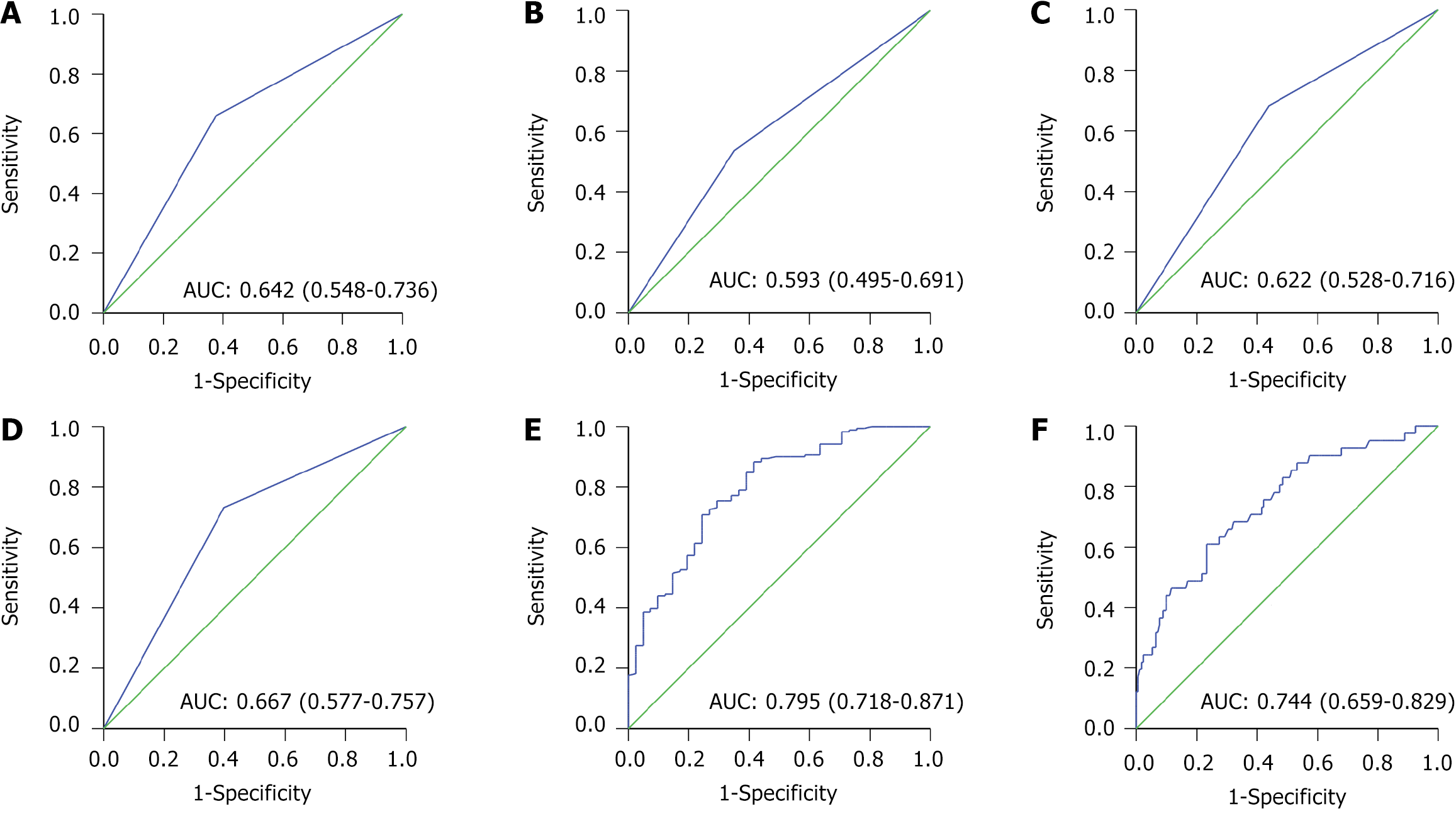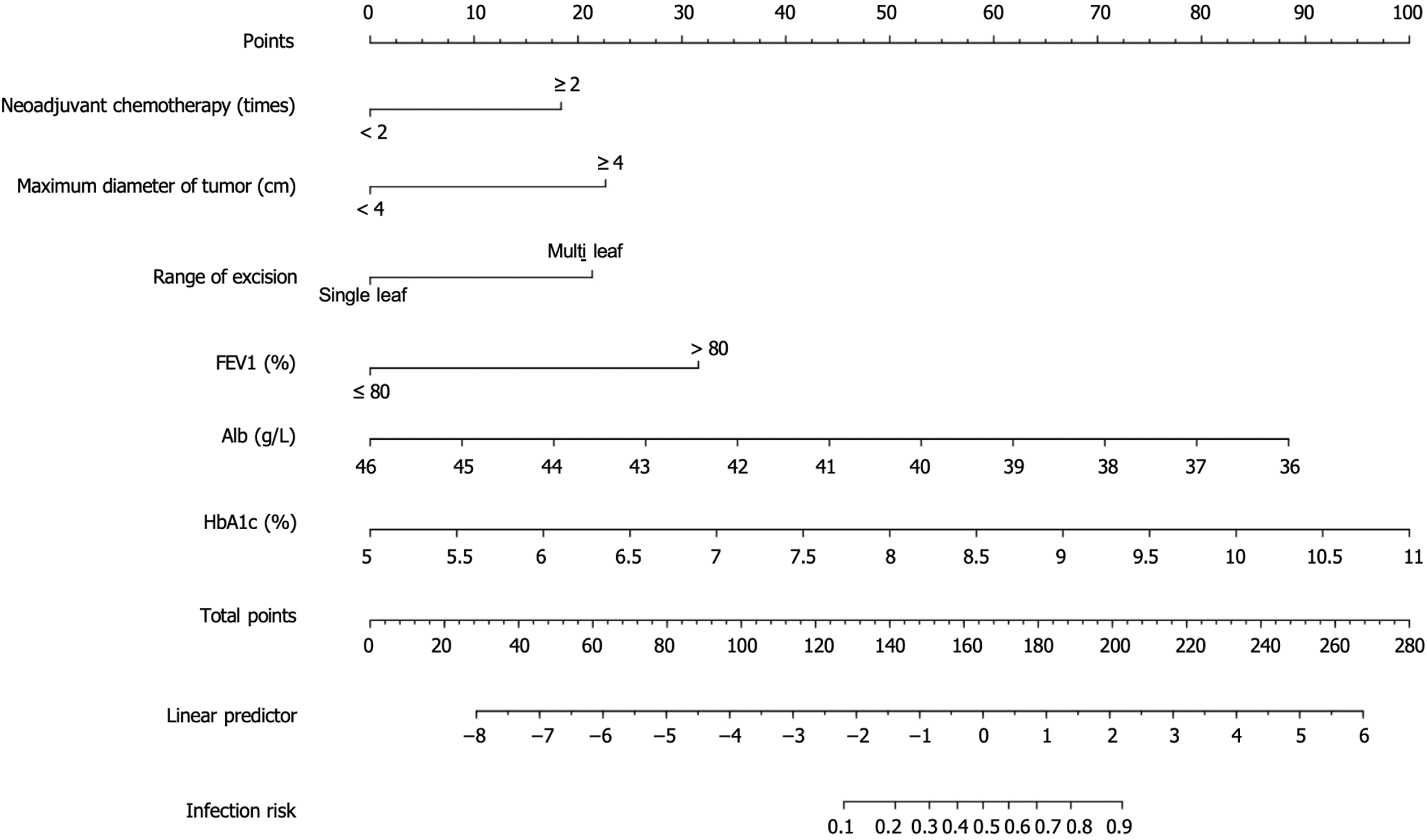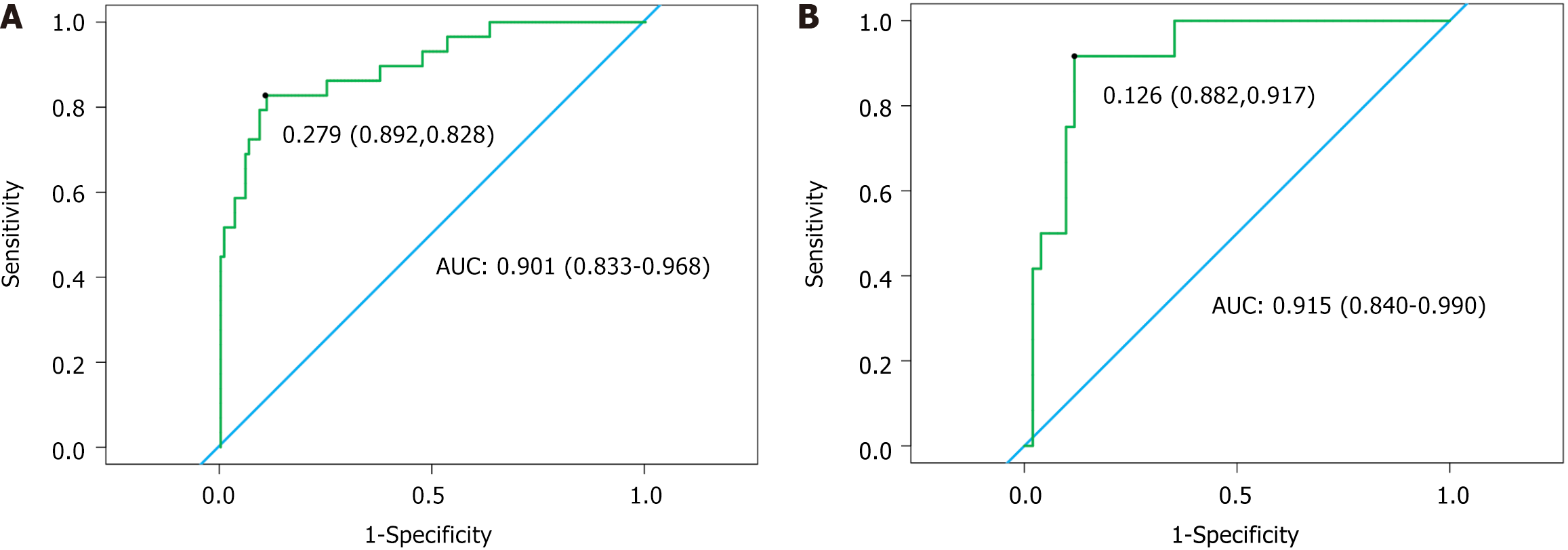Copyright
©The Author(s) 2025.
World J Diabetes. Jul 15, 2025; 16(7): 106903
Published online Jul 15, 2025. doi: 10.4239/wjd.v16.i7.106903
Published online Jul 15, 2025. doi: 10.4239/wjd.v16.i7.106903
Figure 1 Strengthening the reporting of observational studies in epidemiology diagram.
TNM: Tumor node metastasis; PPI: Postoperative pulmonary infection; OR: Odds ratio; FEV1: Forced expiratory volume in one second; HbA1c: Hemoglobin A1c; AUC: Area under the curve.
Figure 2 Distribution of pathogens.
Figure 3 Receiver operating characteristic curve for predicting postoperative pulmonary infection in elderly diabetic lung cancer patients.
A: Neoadjuvant chemotherapy; B: Maximum tumor diameter; C: Range of excision; D: Forced expiratory volume in one second; E: Albumin; F: Hemoglobin A1c. AUC: Area under the curve.
Figure 4 Nomogram Model.
The segments with different scales indicate the extent to which different predictive indicators affect the outcome. The higher the score, the greater its impact on postoperative pulmonary infection. FEV1: Forced expiratory volume in one second; Alb: Albumin; HbA1c: Hemoglobin A1c.
Figure 5 Receiver operating characteristic curves.
A: Training group; B: Validation group. AUC: Area under the curve.
Figure 6 Calibration curves.
A: Training group; B: Validation group. If the apparent line and bias-corrected line were close to the ideal calibration curve, it indicated that the model’s predicted probabilities were highly consistent with the actual probabilities, and the model was well-calibrated.
Figure 7 Decision curve analysis curves.
A: Training group; B: Validation group. All line: Indicates that all patients had postoperative pulmonary infection (PPI); None line: Indicates that none of the patients had PPI. If the Train line was above both the all and none lines, indicating that the model performed better in the probability range.
- Citation: Chen ZY, Hong ZQ, Wang TQ, Fu GMZ, Su WM, Zhou CW. Risk factors for pulmonary infection after thoracoscopic radical resection of lung cancer in elderly patients with diabetes mellitus. World J Diabetes 2025; 16(7): 106903
- URL: https://www.wjgnet.com/1948-9358/full/v16/i7/106903.htm
- DOI: https://dx.doi.org/10.4239/wjd.v16.i7.106903















